Ospreys are magnificent birds of prey that are loads of fun to photograph. Their manner of fishing by diving feet first is exhilarating to watch and a challenge to photograph. Living in West Texas you may think your chances of photographing an Osprey might be slim but even though Ospreys are not common in West Texas they can be found more often than you think. During their migration, they can be found near any body of water such as freshwater lakes and playas as long as there are good fish populations. The best time to spot them is during the fall migration, late September through mid-November. Believe it or not, all of the photographs posted in this blog were taken in Midland Texas. Let’s explore some things about Ospreys that will help you improve your chances of photographing one next fall.
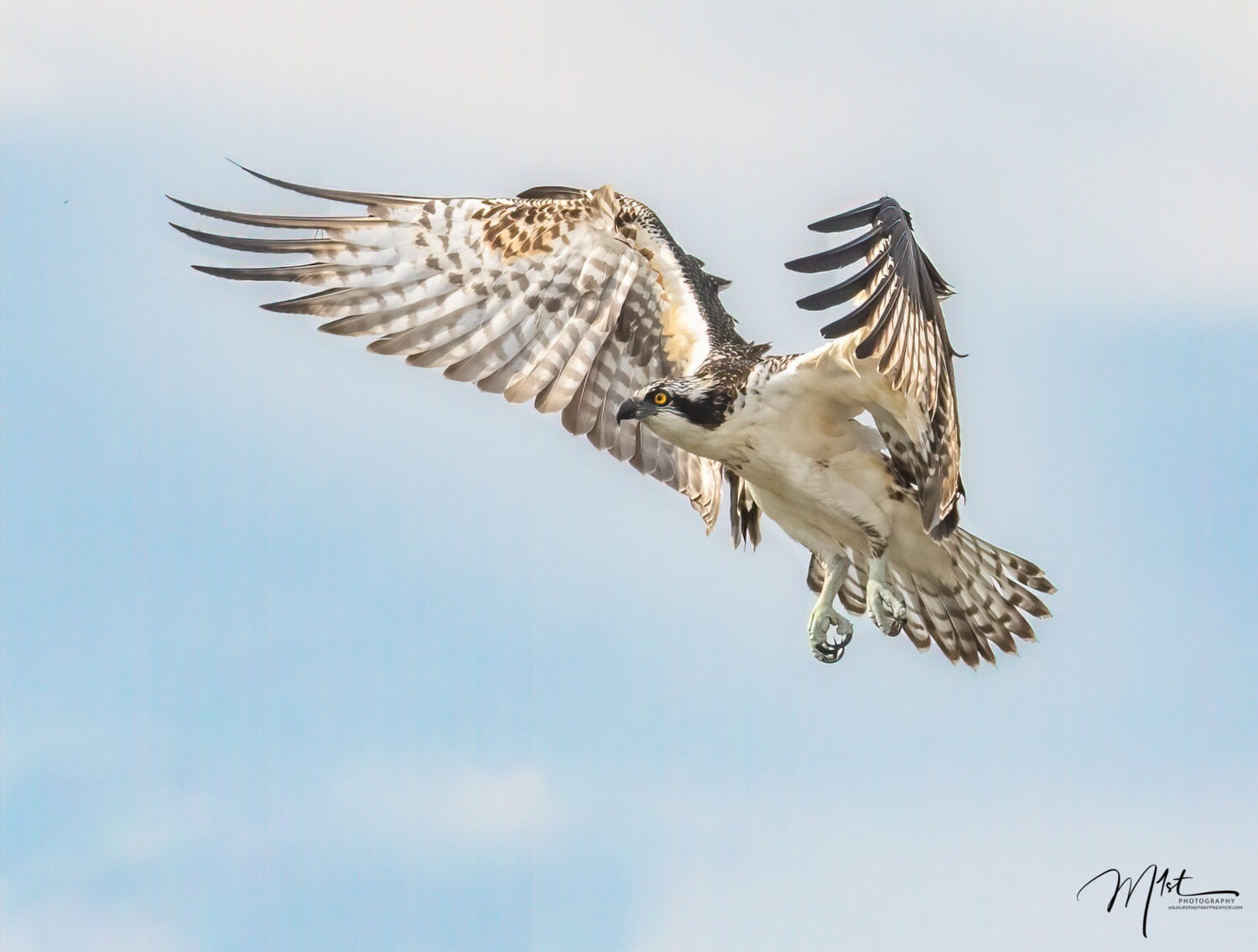
Ospreys (Pandion haliaetus) are large, fish-eating raptors found throughout the world. They are sometimes called “fish hawks” or “sea hawks” due to their preference for hunting fish in shallow water. Initially, let’s learn a little about the osprey’s migration, habitat, and feeding preferences in hopes it will better help us both find and photograph these magnificent birds.
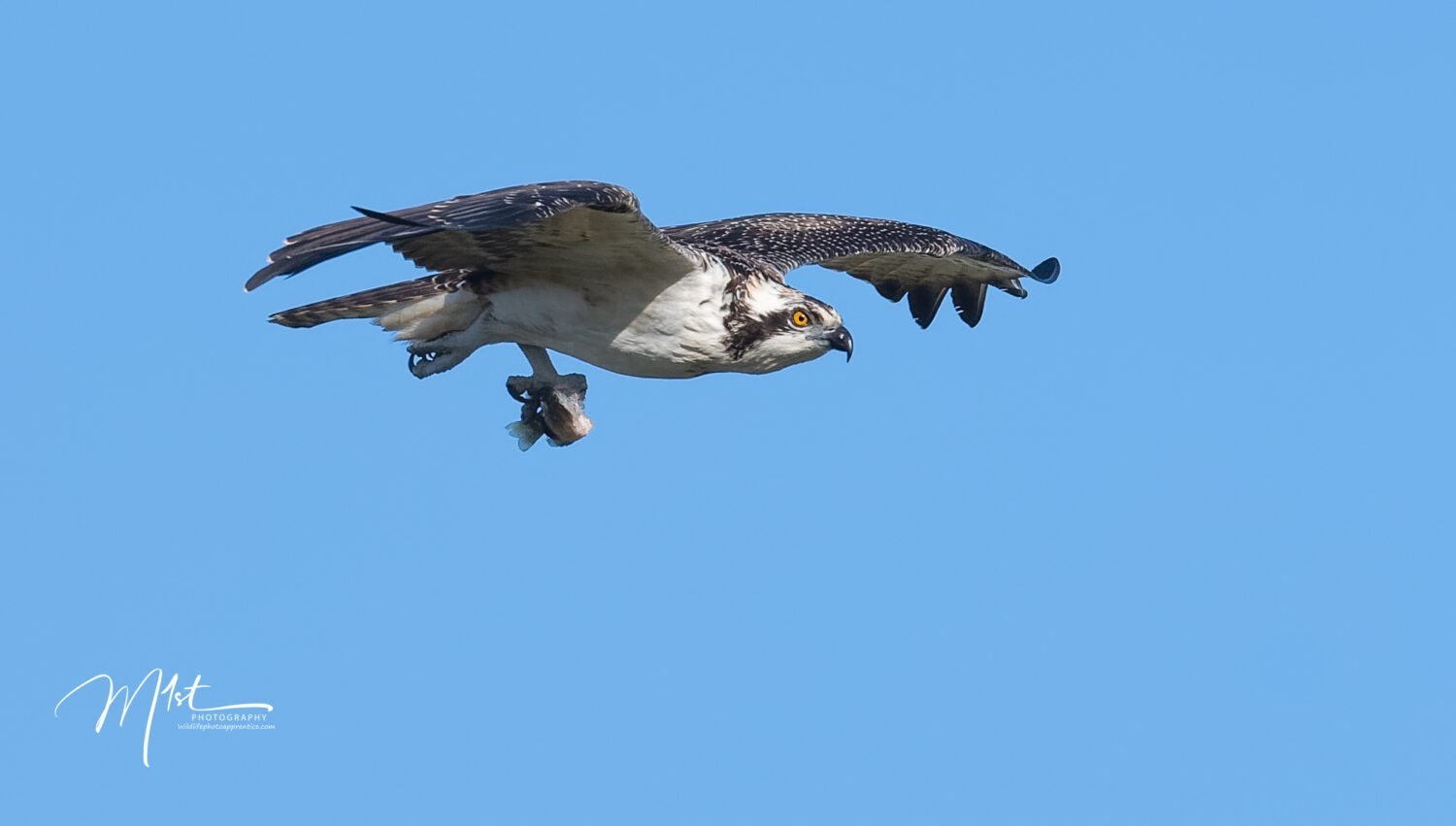
Migration:
Ospreys are migratory birds, and they undertake long-distance flights twice a year between their breeding and wintering grounds. They breed in North America, Europe, and Asia, and their wintering grounds are in Central and South America, Africa, and Asia. During migration, ospreys can fly for several hours at a time, covering up to 160 km (100 miles) per day. They migrate alone or in small groups, and their migration routes can vary widely depending on the region. Fortunately, their migration patterns reliably bring them through West Texas.
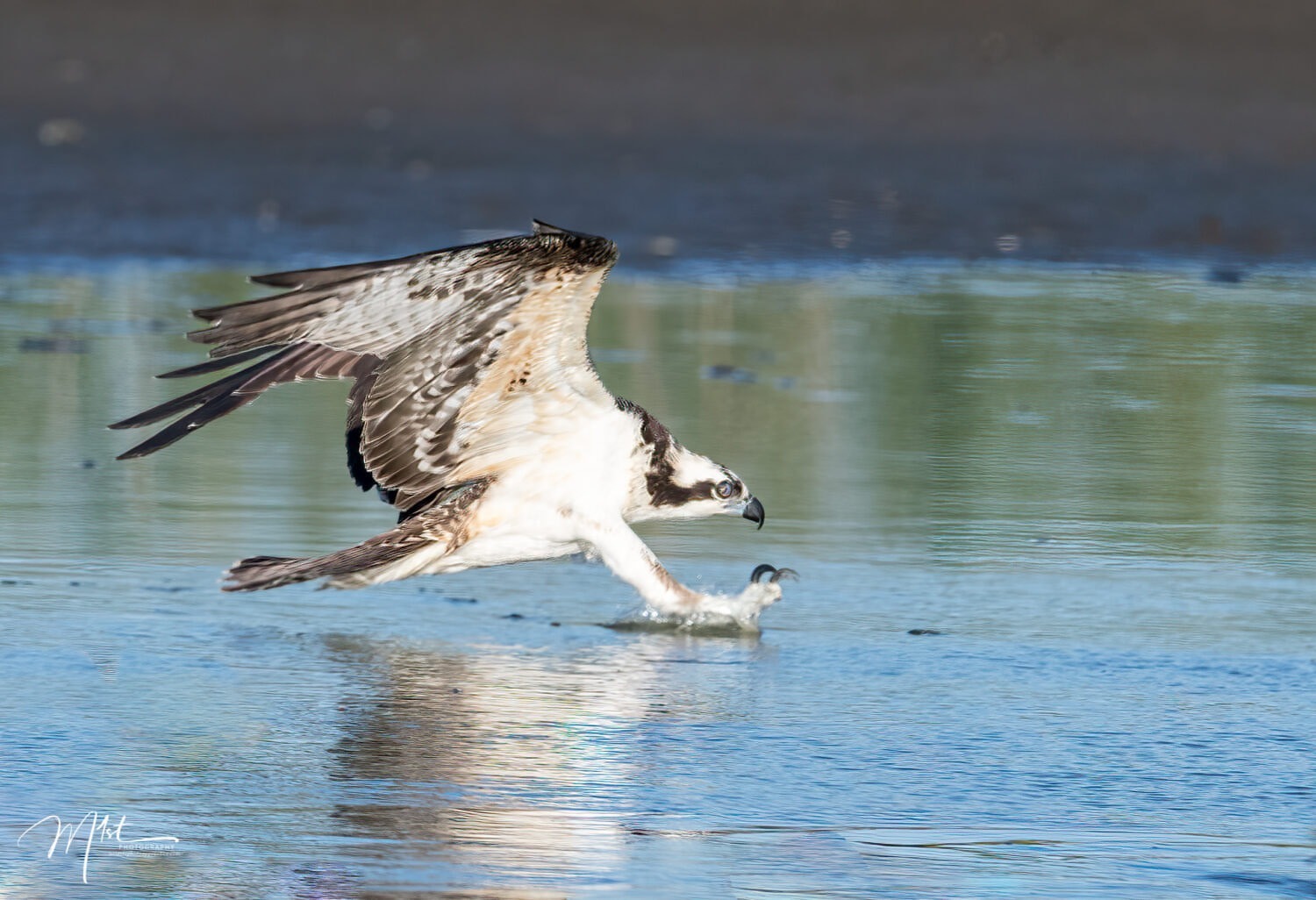
Ospreys migrate through West Texas during their spring and fall migration periods. Spring migration typically occurs from late February to early May, while fall migration occurs from late August to early November. During these times, ospreys can be seen in the area as they move between their breeding and wintering grounds. However, the timing of their migration can vary depending on the individual bird and environmental factors, so the exact timing of their appearance can be unpredictable. It’s a good idea to check local birding reports or consult with local birdwatching organizations to get an idea of the best times and locations to spot ospreys during their migration through West Texas. In Midland, I most commonly find them from early October through mid-November.
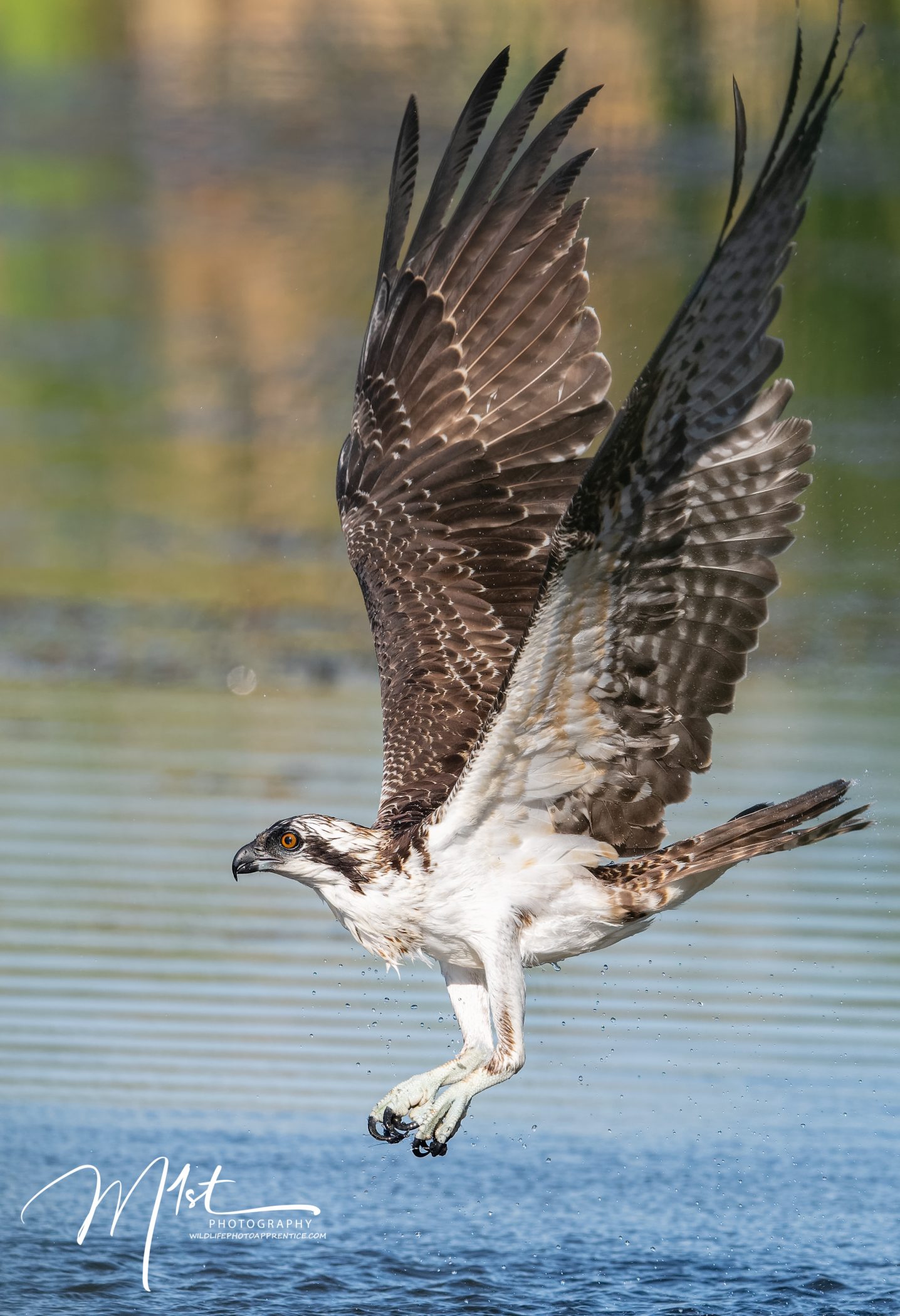
Habitat:
Ospreys prefer habitats close to shallow water bodies, such as rivers, lakes, estuaries, and coastal areas. They build their nests on high structures such as tall trees, cliffs, or man-made structures like telephone poles, transmission towers, and nest platforms. Their nests are large, bulky structures made of sticks, twigs, and other natural materials, and they can grow to be over a meter (3 feet) across.
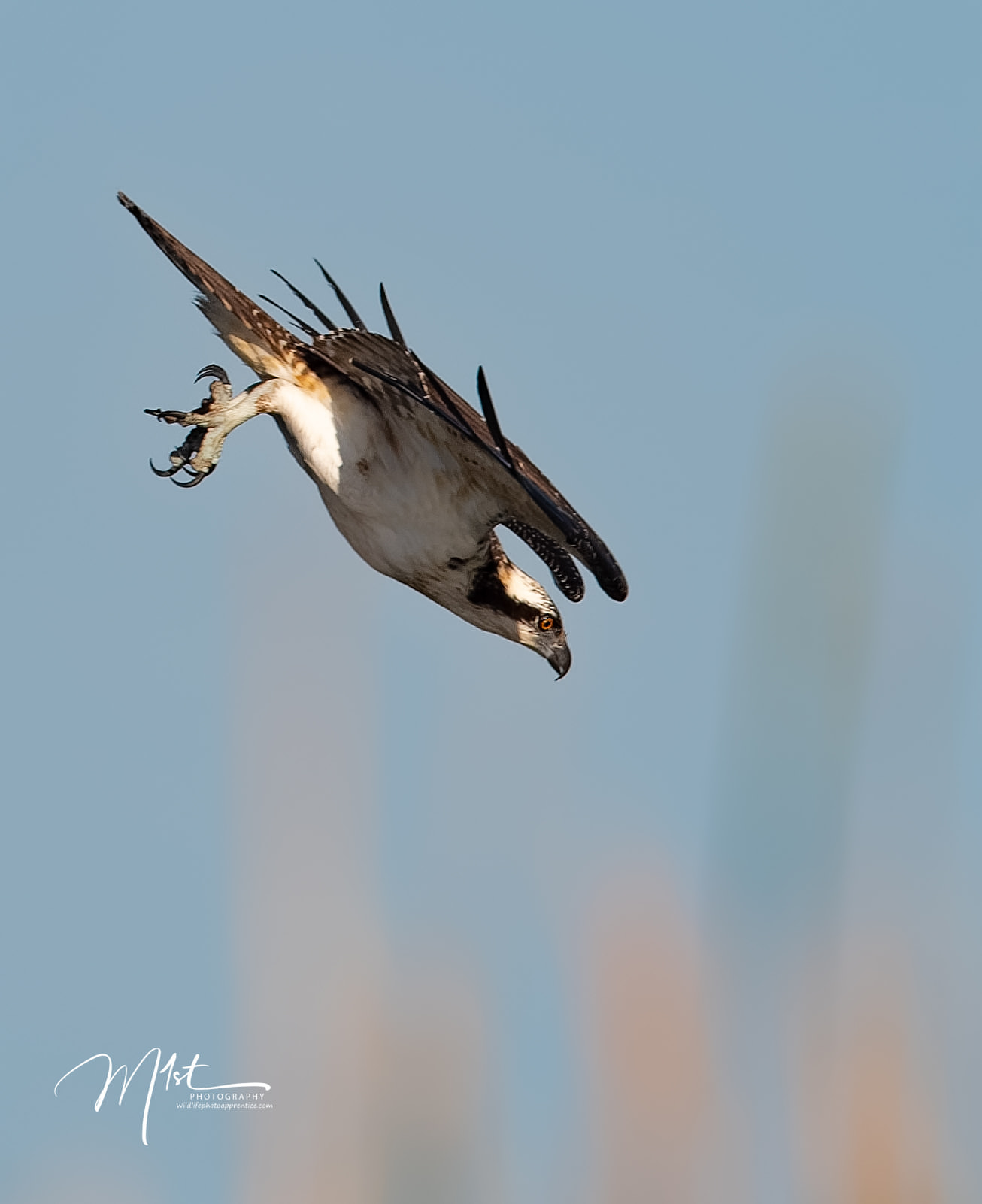
Feeding preferences:
Ospreys are opportunistic predators, meaning they hunt various prey species depending on what is available. Their primary food source is fish, which they catch by diving into the water feet-first. They have specially adapted feet with reversible outer toes and spiny soles that help them grasp fish as they fly out of the water. They can carry fish weighing up to half their own weight.
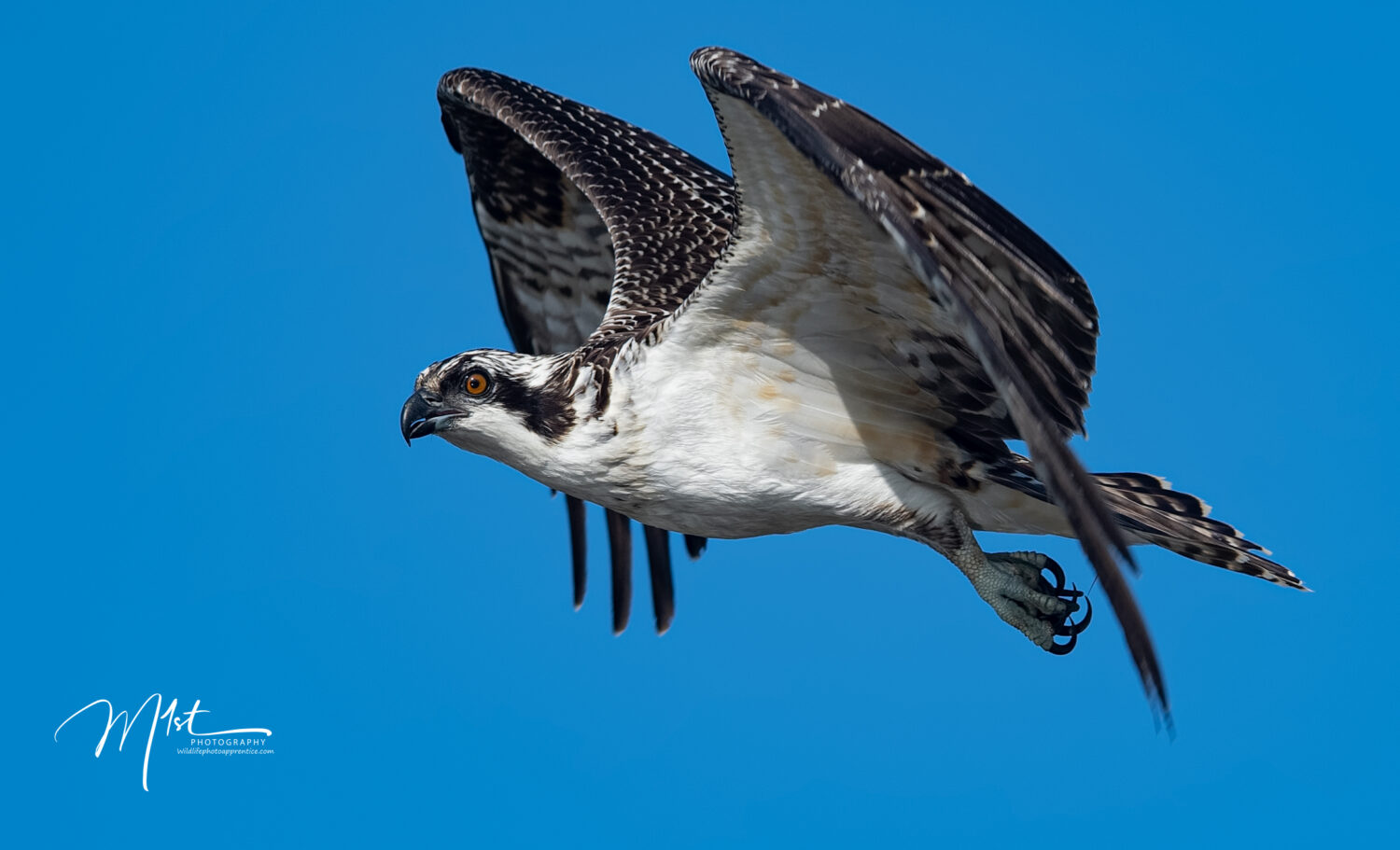
Ospreys typically feed once or twice a day, but this can vary depending on factors such as the availability of prey and the demands of feeding their young. They have a success rate of around 25-40% when hunting, meaning they catch a fish on roughly one out of every three to four attempts. Once they catch a fish, they will carry it to a nearby perch, such as a tree or a nest platform, where they will consume it. In general, once successful, it will be some time before an osprey hunts again. Overall, the feeding frequency of ospreys can vary depending on their specific circumstances and the availability of food in their environment.
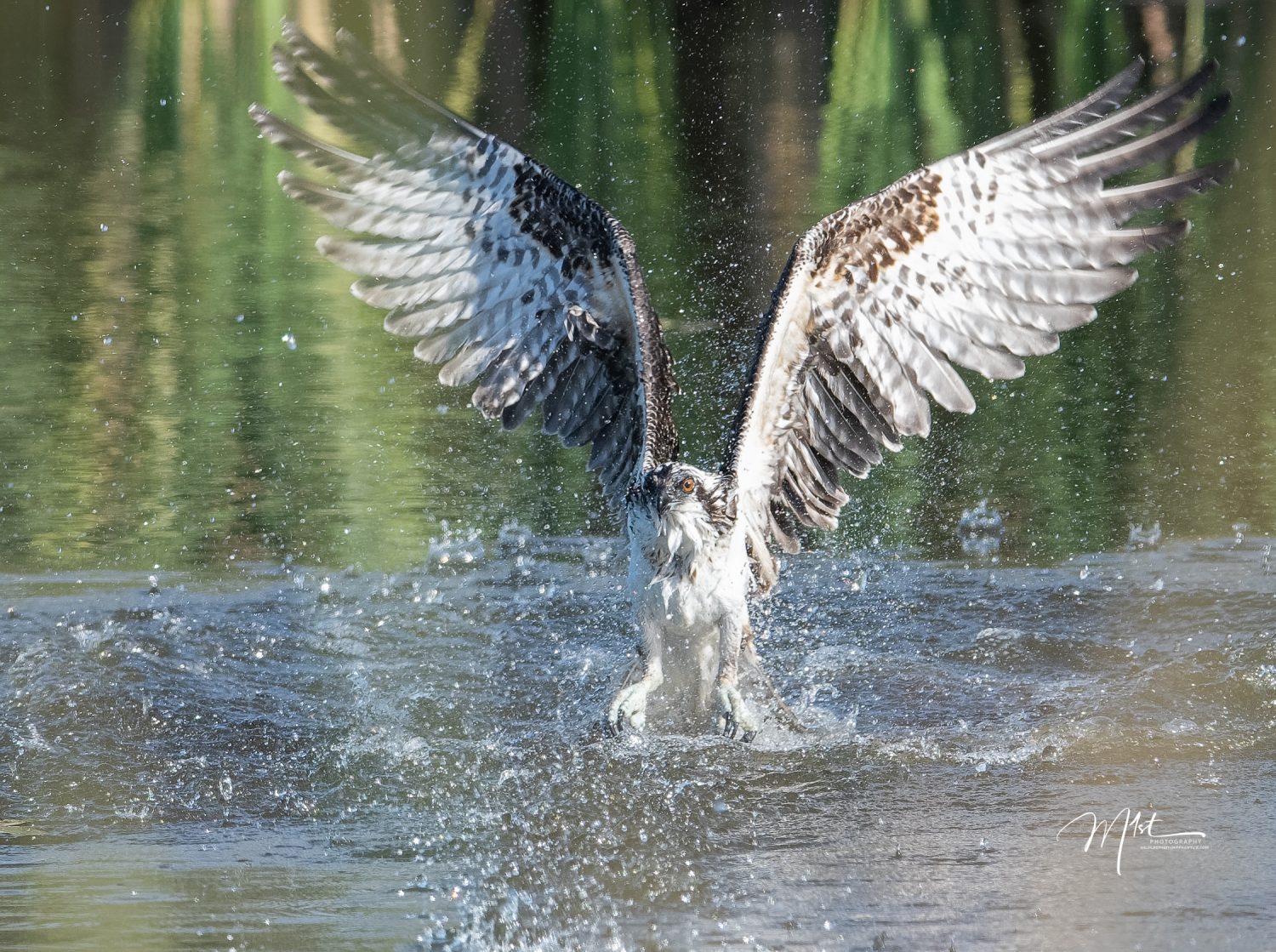
Ospreys are diurnal birds, meaning they are active during the daytime and generally prefer to feed during daylight hours. To maximize your photographic opportunities go in the early morning and late afternoon. They typically hunt for fish during these times when the light is low and the fish are more visible near the surface of the water. During midday, when the sun is high and the light is strong, fish tend to retreat to deeper waters, making them harder to spot and catch. However, ospreys can be opportunistic feeders and may hunt at any time of day if the conditions are right or if they are particularly hungry. Additionally, during the breeding season, ospreys may need to hunt more frequently and may adjust their feeding patterns to accommodate the needs of their growing chicks.
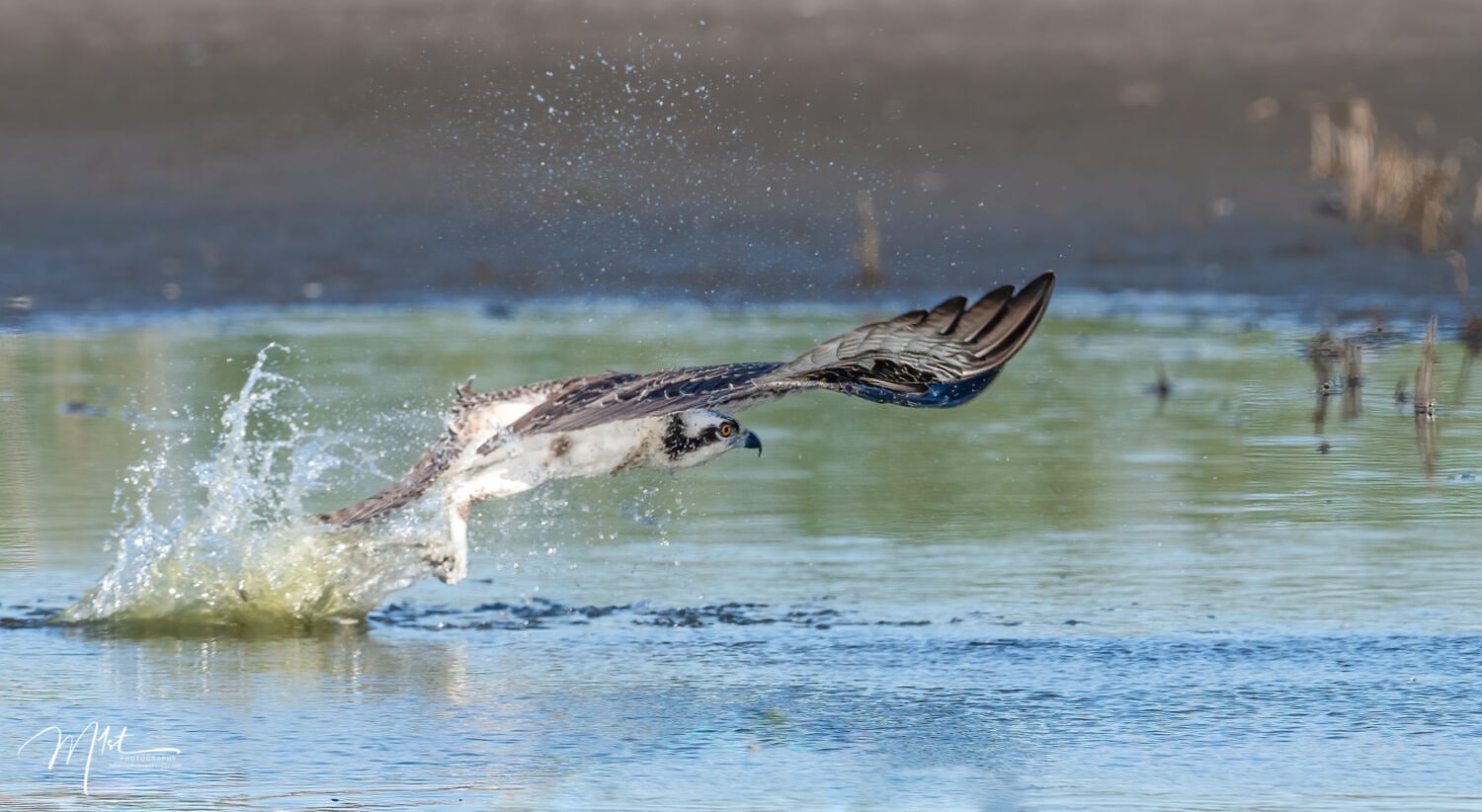
While Osprey are large generally slow birds, making them easy to track, photographing ospreys can be difficult and exacting. Utilizing the right equipment and certain techniques can lead to consistent success. Here are a few things I consider.
Choose the right location: Look for areas where ospreys are known to be active, such as near bodies of water where they hunt for fish. Find a spot where you can observe them without disturbing their natural behavior. Overall, I have found the osprey in West Texas to be very tolerant and once I have chosen a location from which to photograph, their activity is not affected by my presence. The area where I photograph Osprey the most in west texas is a large playa lake. Sometimes it seems that when I choose a location to set up, the birds always fish across the pond.
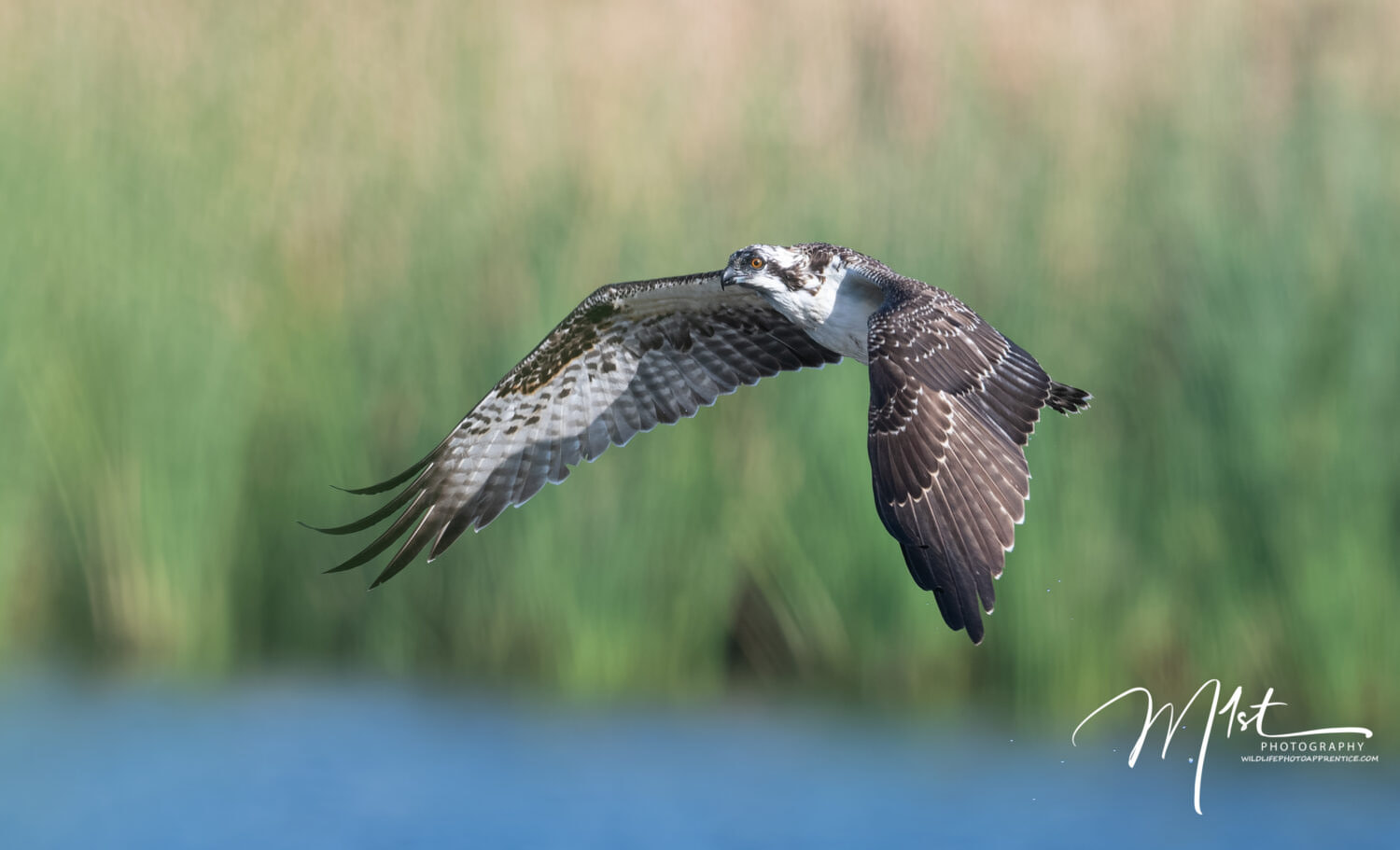
Use a telephoto lens: Ospreys can be difficult to approach, so a telephoto lens will allow you to get close-up shots without disturbing them. A lens with a focal length of 300mm or more is recommended. I have used both. Certainly, at 300mm, it is easier to acquire the bird and keep it in the viewfinder throughout the diving sequence but 600mm, with practice, can allow you to get some fabulous close-ups.
How you set up your camera is crucial to improving your chances of getting that perfect shot. Here are some camera settings to consider if you head out to shoot Ospreys in flight.
Shutter Speed: A fast shutter speed is crucial to freeze the motion of the osprey in flight. A shutter speed of 1/1000th of a second may be adequate when the bird is stationary in a hover, but once they start to dive, 1/3200th of a second is needed to freeze the action.
Aperture: You’ll want a wide aperture (small f-number) to get a shallow depth of field and blur the background. However, you’ll need to balance this with the need for enough depth of field to keep the osprey in focus. Try using an aperture between f/5.6 and f/8.
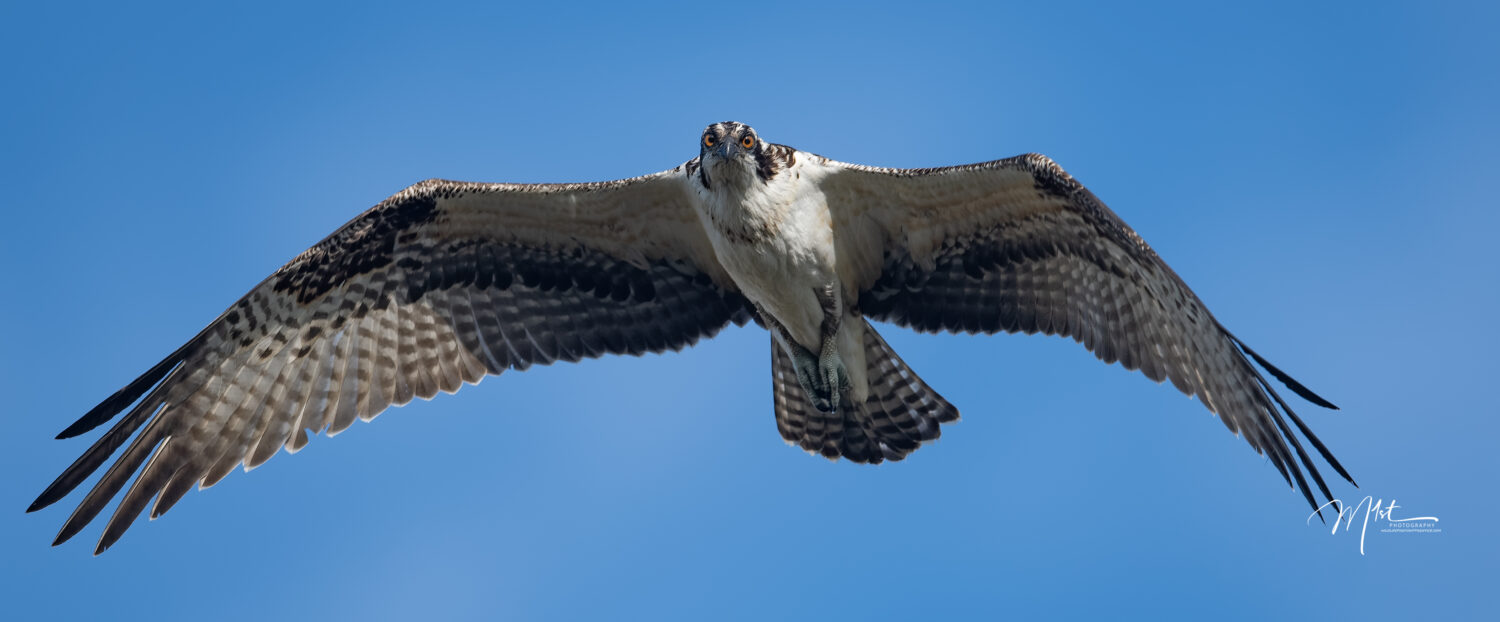
ISO: You’ll want to use the lowest ISO possible to minimize the noise in your image. Start with the lowest ISO you can tolerate with your camera and adjust as needed to maintain shutter speed. Shutter speed is king in this situation. With today’s excellent noise reduction software, I never mind upping my ISO to get enough shutter speed.
Focus: Use continuous autofocus mode to track the osprey as it moves through the frame. If your camera has it, area or 3d tracking autofocus modes are helpful. Use them to help you keep the bird in focus.
Burst Mode: Use burst mode to capture multiple images in quick succession. Ten frames per second or higher will increase your chances of getting a sharp, well-composed shot just at the right moment in the action.
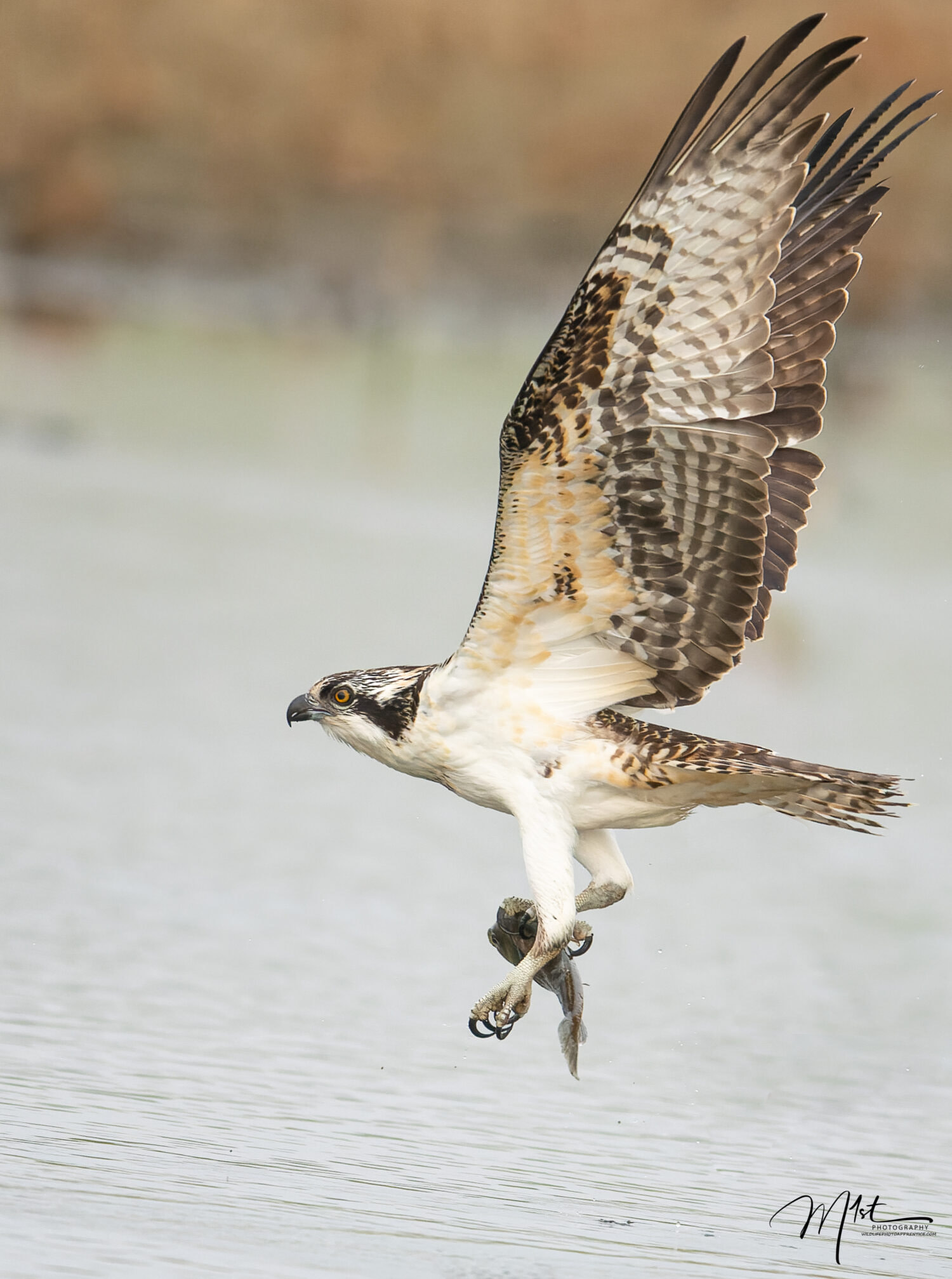
Remember, these are just starting points. Experiment with different settings and adjust as needed to get the best results. The longer you observe these birds. The more practice you get. The better photos you will take.
Pay attention to the light: The best time to photograph ospreys is during the golden hours of the day when the light is soft and warm. Position yourself so the light is coming from behind you or at an angle to your subject.
Pay attention to the wind: An Osprey will hover facing into the wind above the water while locating fish. Placing the wind at your back will ensure that the subject faces the camera for better results.
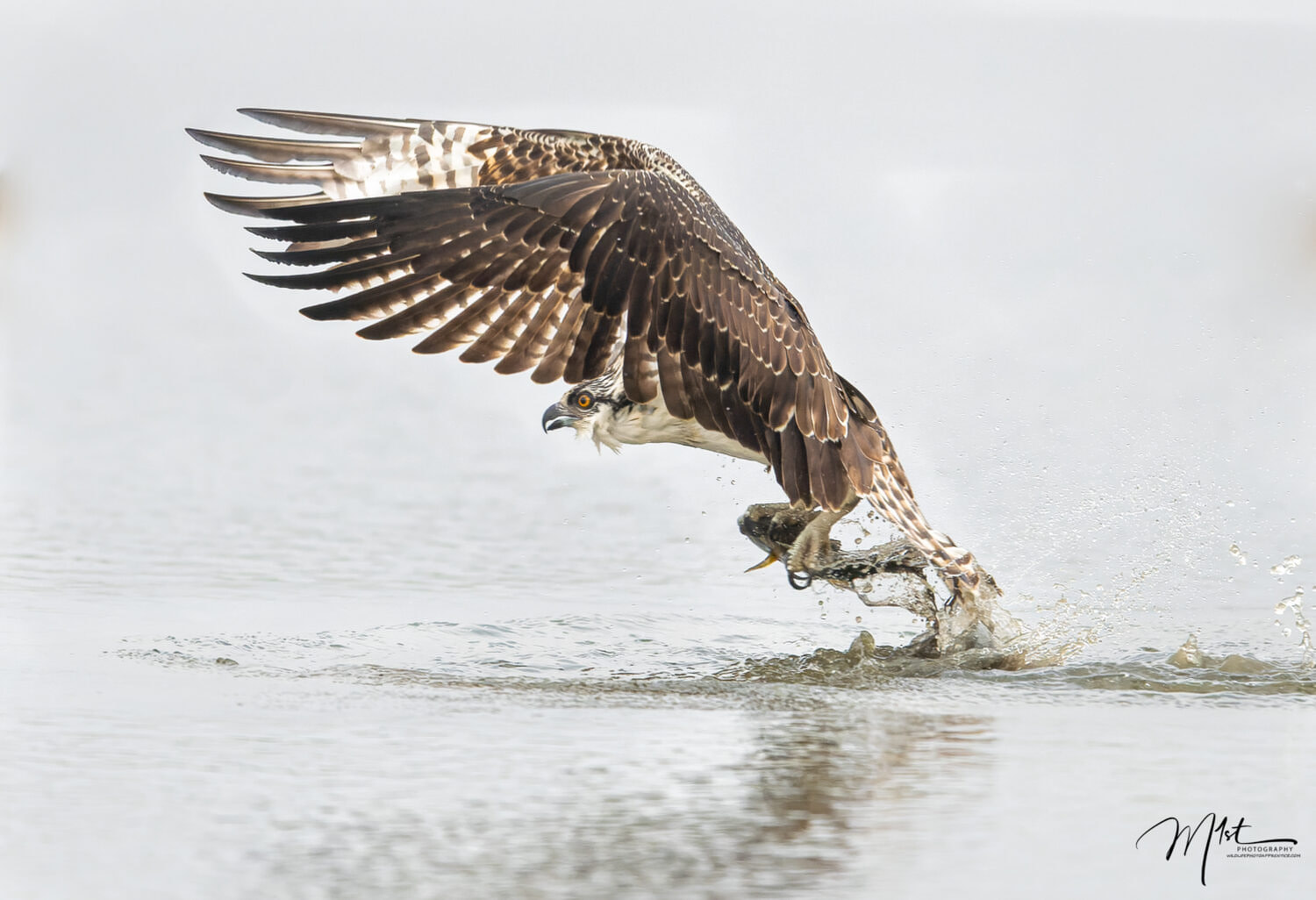
Be patient: As with all wildlife, patience is very important. Osprey cover large areas while fishing. Often it seems as if the location you have chosen is not ideal, but with patience sooner or later they usually present close enough to get some good photos. Ospreys can be unpredictable, so it’s important to wait for the right moment to capture your shot. Observe their behavior and anticipate their movements to increase your chances of grabbing a great image.
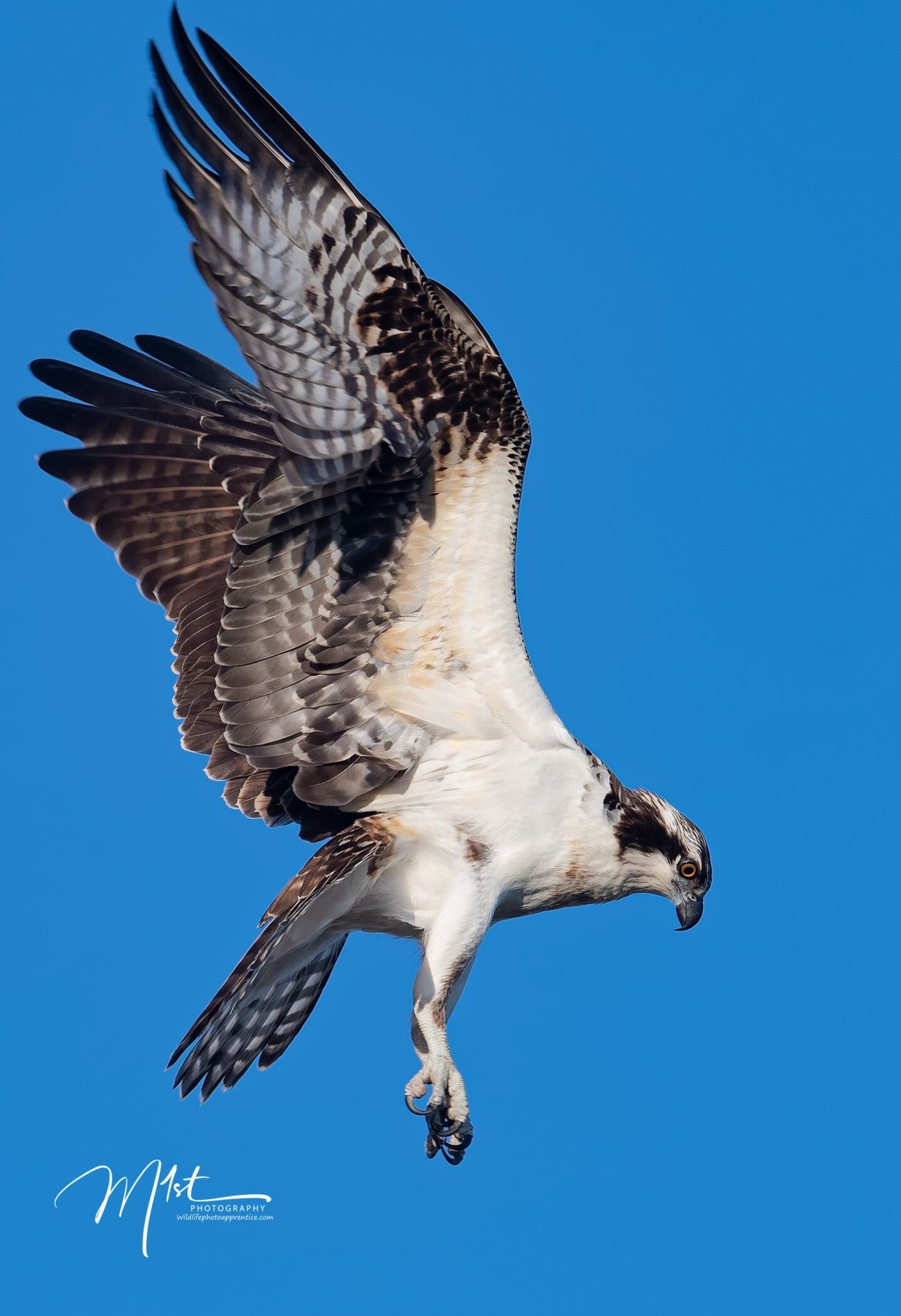
In conclusion, Ospreys are fascinating birds that are well-adapted to hunting fish in an aquatic environment. Their habitat and feeding preferences make them predictable and unique subjects for nature photography. With the right techniques, even in West Texas, you have a great chance of capturing that wall-hanger of an Osprey you’ve always wanted.
